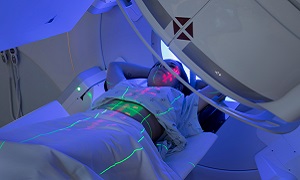Acoustic Neuroma
Acoustic neuroma is a noncancerous growth which can develop on the eighth cranial nerve. Also termed as the vestibulocochlear nerve, it is known to connect the inner ear with the brain, and it consists of two different parts. While one part is responsible for the transmission of sound, the other part helps to send balance information from the inner ear to the brain.
Acoustic neuromas, which may also be termed vestibular schwannomas, or neurilemmomas, generally grow slowly over a period of years. They may not actually invade the brain, but they can push on it as they continue to grow. Larger tumors can press on the nearby cranial nerves that control the muscle of facial expression as well as sensation. If the tumors get large enough to press on the brain stem or the cerebellum, then they can be quite deadly.
Symptoms of Acoustic Neuroma
The symptoms of acoustic neuroma vary depending on the size of the tumor and the structures it affects. Common symptoms include:
- Hearing Loss: Often gradual and unilateral (affecting one ear). It may be accompanied by tinnitus (ringing in the ears).
- Balance Problems: Dizziness, unsteadiness, or vertigo due to the tumor’s effect on the vestibular nerve.
- Tinnitus: A persistent ringing or buzzing sound in the affected ear.
- Facial Numbness or Weakness: As the tumor grows, it may exert pressure on the facial nerve (cranial nerve VII), leading to numbness or weakness in the face.
- Headache: Often a late symptom, resulting from increased intracranial pressure as the tumor grows.
- Hydrocephalus: In advanced cases, if the tumor causes obstruction of cerebrospinal fluid (CSF) pathways, leading to fluid buildup in the brain.
Causes & Risk Factors of Acoustic Neuroma
The exact cause of acoustic neuroma is not fully understood, but several factors may contribute to its development:
- Genetic Mutations: Most acoustic neuromas are sporadic, meaning they occur without a known cause. However, about 5-10% of cases are associated with neurofibromatosis type 2 (NF2), a genetic disorder characterized by the growth of noncancerous tumors in the nervous system. In NF2, acoustic neuromas often develop bilaterally (on both sides).
- Environmental Factors: There is no conclusive evidence linking environmental factors or lifestyle choices to the development of acoustic neuromas.
- Radiation Exposure: Some studies have suggested a possible link between previous radiation treatment to the head or neck and an increased risk of acoustic neuroma, but this association remains controversial.
Diagnosis of Acoustic Neuroma
In the early stages, it is generally difficult to diagnose acoustic neuroma, since signs and symptoms might be subtle and can develop over time gradually. Some of the common symptoms include hearing loss, which is associated with several middle and inner ear problems.
After you ask questions about your symptoms, your doctor will be conducting an ear exam. Your doctor might order the following tests.
Hearing test (audiometry)
Imaging
Treatment
There are three main courses of treatment which are used for acoustic neuroma:
- Observation
- Surgery
- Radiation therapy
Observation
Surgery
Surgery for acoustic neuromas involves removing the entire or part of the tumor.
Three main surgical approaches exist, for the removal of an acoustic neuroma:
Translabyrinthine
Translabyrinthine involves making an incision behind the ear and then removing the bone behind the ear along with some of the middle ear. This procedure is generally used for tumors which are larger than 3 centimeters. The upside of this approach is that it can allow the surgeon to see an important cranial nerve or the facial nerve quite clearly before he/she removes the tumor. The downside to this technique is that it causes permanent hearing loss.
Retrosigmoid/sub-occipital
Retrosigmoid/sub-occipital method involves exposing the back of the tumor by opening the skull near the back of one’s head. This approach can be used in order to remove tumors of any size and it also offers the possibility of preserving one’s hearing ability.
Middle fossa
Radiation therapy
Radiation therapy might be recommended in certain cases for acoustic neuromas. Due to state-of-the-art delivery techniques, it is possible to send high doses of radiation to the tumor while at the same time, limiting exposure and damage to any surrounding tissue.
The tumor’s growth might slow or stop or it might even shrink, however, the radiation doesn’t remove the tumor completely.
Complications of Acoustic Neuroma
Complications of acoustic neuroma and its treatment may include:
- Hearing Loss: Partial or complete loss of hearing in the affected ear, depending on the treatment approach.
- Facial Weakness or Numbness: Potential for temporary or permanent changes in facial nerve function.
- Balance Issues: Persistent dizziness or imbalance, especially if the vestibular nerve was affected.
- Hydrocephalus: Possible if the tumor causes obstruction of cerebrospinal fluid flow.





